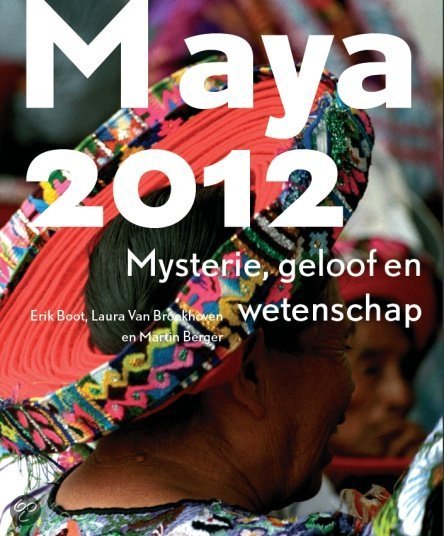
(photograph from BBC News)

(photograph from Eurekalert)(drawing from Mesoweb.com report)
(drawing from New Scientist)
Saturday, September 16, 2006
The order and pattern of carved symbols appeared to be that of a true writing system, according to the Mexican scientists who have studied the slab and colleagues from the United States. It had characteristics strikingly similar to imagery of the Olmec civilization, considered the earliest in pre-Columbian America, they said.
But Dr. Houston called the discovery tantalizing, saying, “It could be the beginning of a new era of focus on the Olmec civilization.”
Mesoamerica researchers who were not involved in the Veracruz discovery agreed that the signs appeared to be a true script, and that the slab could be expected to inspire more intensive study of the Olmecs, whose civilization emerged about 1200 B.C. and had all but disappeared by 400 B.C.
The stone slab first came to light in 1999, when road builders digging gravel came across it among debris from an ancient mound at Cascajal, a place the archaeologists called the “Olmec heartland.” The village is on an island in southern Veracruz about a mile from San Lorenzo, where ruins have been found of the dominant Olmec city, which stood from 1200 B.C. to 900 B.C.
If the present find is indeed "first writing" in Mesoamerica in the "true sense" of writing remains to be seen although the signs on this small stone bloque are seemingly organized in a linear format, the sign inventory is limited: 20 discernable or distinct signs within a "text" of 62 signs. Future research in the Mexican state of Veracruz may thus hold further clues to the origin of writing in Mesoamerica.
Wednesday, September 13, 2006

’u-ja-yi
yu-k’i?-b’i
ta-yu-ta
tzi-li-ka-wa
ke?-KELEM?-ma
sa-ja-la
[KAL]ma[TE’]
Provisional transliteration and translation: ujay yuk’ib’ ta yuta[l] tzi[hi]l [ka]kaw kelem(?) sajal kalomte’ "(it is) the clay cup (bowl), the drink-instrument for food(?) of tzi[hi]l kakaw of Kelem(?) Sajal Kalomte’."
’u-ja-yi
yu-k’i?-b’i
ta-yu-ta
tzi-li-ka-wa
SAK?-?-ma
sa-ja-la
b’a-ka-KAB’
Provisional transliteration and translation: ujay yuk’ib’ ta yuta[l] tzi[hi]l [ka]kaw kelem(?) sajal b’a[h]kab’ "(it is) the clay cup (bowl), the drink-instrument for food(?) of tzihil kakaw of Kelem(?) Sajal B’ahkab’."
yu-k’i?-b’i
ti-tzi-hi
li
ka-wa
ke?-KELEM?-ma
sa-ja-la
’u-yu-la
Provisional transliteration and translation: yuk’ib’ ti tzihil [ka]kaw kelem(?) sajal u-yul "(it is) the drink-instrument for tzihil kakaw of Kelem(?) Sajal, (it is) his work."
yu-k’i?-b’i
ta-tzi-hi
ka-wa
ke?-KELEM?-ma
sa-ja-la
’u-yu-lu-li
Provisional transliteration and translation: yuk’ib’ ta tzihi[l] [ka]kaw kelem(?) sajal u-yulul[il] "(it is) the drink-instrument for tzihil kakaw of Kelem(?) Sajal, (it is) his work."
’u-ja-yi
yu-k’i?-b’i
ti-tzi-hi
CHAK-ch’o-ko
ke?-KELEM?-ma
sa-ja-la
Provisional transliteration and translation: ujay yuk’ib’ ti tzihi[l] chakch’ok kelem(?) sajal "(it is) the clay cup (bowl), the drink-instrument for tzihi[l kakaw] of Chakch’ok Kelem(?) Sajal."

yu-k’i?-b’i
ta-tzi-hi
ka-wa
sa-ja-la
’u-yu-lu-li
b’a-ka-KAB’
Provisional transliteration and translation: yuk’ib’ ti tzihi[l] [ka]kaw sajal u-yulul[il] b’a[h[kab’ "(it is) the drink-instrument for tzihi[l] kakaw of Sajal, (it is) the work of B’ahkab’."
Coe, Michael D.
1973 The Maya Scribe and His World. New York: The Grolier Club.
Danien, Elin C.
2006 Paintings of Maya Pottery: The Art and Career of M. Louise Baker. FAMSI report.
Dieseldorff, Erwin
1933 Kunst und Religion der Mayavölker 3. Hamburg: L. Friederichsen.
Kettunen, Harri
2005 Nasal Motifs in Maya Iconography. Helsinki: Helsinki University.
Proskouriakoff, Tatiana
1950 A Study of Classic Maya Sculpture. CIW Publication 593. Washington: CIW.
Sunday, September 10, 2006

Crucial apoyo a Chichén Impulso en EE.UU. para que llegue a ser maravilla del mundo. El Castillo de Kukulcán en Chichén Itzá, que compite con otros lugares para integrar la lista de las 7 nuevas maravillas del mundo, recibirá importante apoyo del gobierno del Estado y de la Federación para lograr ese objetivo. El 18 de este mes, el presidente Vicente Fox Quesada, acompañado del gobernador Patricio Patrón Laviada, promoverá desde Nueva York una campaña internacional para impulsar su candidatura. En el lanzamiento mundial de Chichén participarán también el ballet de Ticopó “Siijil Ka'an”, que en maya significa Nacidos del Cielo, y el trío infantil Voces y Guitarras. La campaña a favor de la zona arqueológica maya se maneja con gran sigilo. El Castillo de Kukulcán podría aparecer en la nueva lista de las siete maravillas del mundo si recibe el número suficiente de votos en la encuesta que realiza una organización suiza por internet, desde hace seis años. La primera parte de la encuesta, que conduce la fundación New 7 Wonders, terminó el 31 de diciembre de 2005 con la preselección de 21 sitios, que recibieron el mayor número de votos de una lista inicial de 77 lugares. Algunos de esos lugares son la Acrópolis de Atenas, el Alhambra de Granada, El Cristo del Corcovado, el Coliseo de Roma, la Torre Eiffel, la Gran Muralla China, Machu Picchu en Perú, el Castillo de Neuschwanstein de Alemania, las Pirámides de Giza en Egipto, la estatua de la Libertad, el Taj Mahal y Timbuktú, en Mali.










































